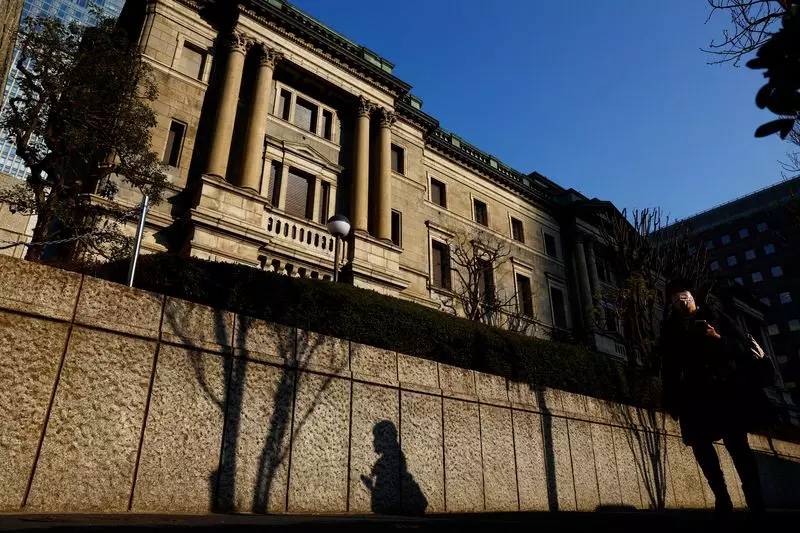The recent interest rate hike by the Bank of Japan (BOJ) has sparked renewed debate among economists and market analysts regarding the efficacy of the central bank’s communication strategies. While the decision to raise rates was telegraphed clearly, reminiscent of the tactics employed by the U.S. Federal Reserve, the BOJ seems to be grappling with an uncertain economic landscape that complicates future actions. This article analyzes the implications of the BOJ’s recent policy changes, the challenges of maintaining market stability, and the broader economic considerations that impact Japan’s financial environment.
The Shift to Clear Communication
In a notable departure from past practices, the BOJ effectively communicated its interest rate hikes in advance, a move that was well-received by the market. By signaling its intentions, the central bank managed to mitigate potential shocks to the financial system—something it had previously struggled with, as evidenced by the confusion surrounding the December rate decision that took investors by surprise. Analysts believe that this preemptive communication was born out of necessity; a reaction to the past misstep that highlighted the need for strategic clarity in turbulent economic waters.
However, the issue at hand is whether this newfound communicative clarity can be sustained over the long term. Market reactions to Ueda’s explicit signaling suggest that such approaches may lead to a dependency on central bank commentary, potentially overshadowing crucial economic indicators such as inflation and growth rates. If investors begin to rely excessively on these communications to guide their expectations, it might create a feedback loop wherein the market’s perception becomes a primary influence on BOJ decisions rather than an objective assessment of economic data.
Despite the clarity in recent communications, the Japanese central bank still faces significant uncertainty regarding when and how much to tighten monetary policy further. Ueda’s assertion that the neutral interest rate—a benchmark neither stimulating nor slowing the economy—remains elusive is telling of the complexities at play. Estimates placing Japan’s nominal neutral rate between 1% and 2.5% indicate that even a couple of additional hikes could bring rates perilously close to this threshold.
In navigating this dilemma, the BOJ walks a fine line. Analysts warn that unbridled enthusiasm for successive rate hikes may lead to unintended economic consequences. Should the BOJ push rates too high too quickly, it could stifle economic growth, especially in an environment already beset by rising living costs and a delicate consumption landscape. The potential repercussions of these decisions extend beyond mere economic parameters—they threaten to displace public confidence in the institution itself.
The Risks of Targeted Guidance
Though clear signaling has its merits, it also comes with risks, particularly in how markets rely on these cues to interpret the BOJ’s monetary policy trajectory. Analysts caution that if the BOJ adopts a strategy of overt signaling prior to every rate discussion, it may inadvertently tie its hands and limit responsiveness to economic shifts. The law that mandates deliberation among BOJ board members on rate decisions further complicates matters, raising the question of whether such a practice is even legally feasible.
Former policymakers have expressed concerns that this reliance on market perceptions may lead the BOJ to become reactive rather than proactive. Instead of gauging their strategies against real economic indicators, they risk becoming captive to market sentiment, potentially disrupting the central bank’s mandate to maintain stable economic growth.
As the BOJ contemplates further rate hikes, it must navigate a host of external economic factors that threaten its objectives. One such factor is the unpredictability surrounding U.S. economic policy, namely the potential ramifications of a shift in U.S. administration. Trade tensions and tariff threats from critical global players like the United States could jeopardize Japan’s status as an export-reliant economy, thereby influencing BOJ decision-making on rate hikes.
Moreover, as the central bank communicates its stance on potential wage gains, the question arises as to whether this will translate into increased consumer spending—an essential component of economic growth. As inflation eats away at purchasing power, the BOJ may prove increasingly challenged to strike a balance between fostering economic activity and controlling price increases.
The Bank of Japan’s recent interest rate hike underscores the delicate balancing act central banks must perform between clarity and flexibility. While effective communication may aid in minimizing market volatility, the lingering uncertainties regarding the Japanese economy add layers of complexity to the decision-making process. As the BOJ progresses, it will undoubtedly face the challenge of managing market expectations amidst an ever-evolving economic landscape, reinforcing that the path of monetary policy is rarely straightforward.

